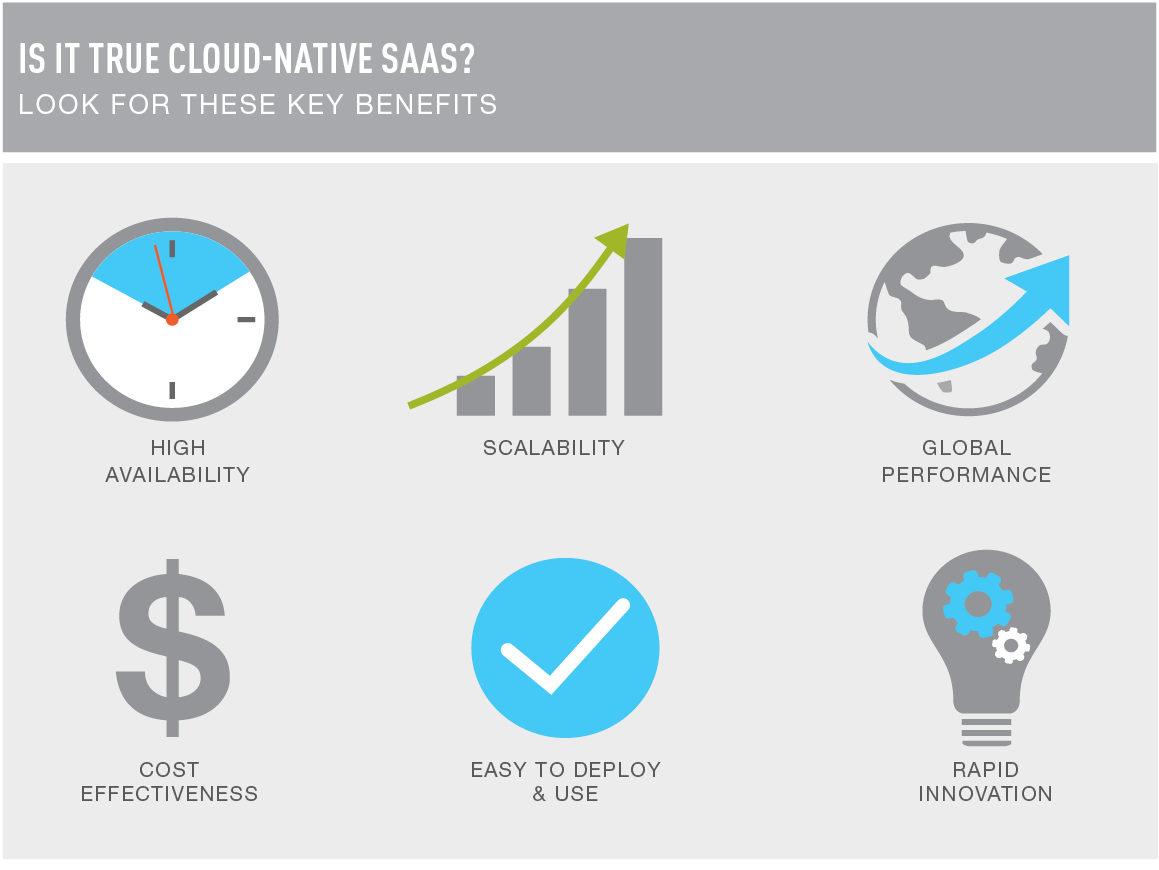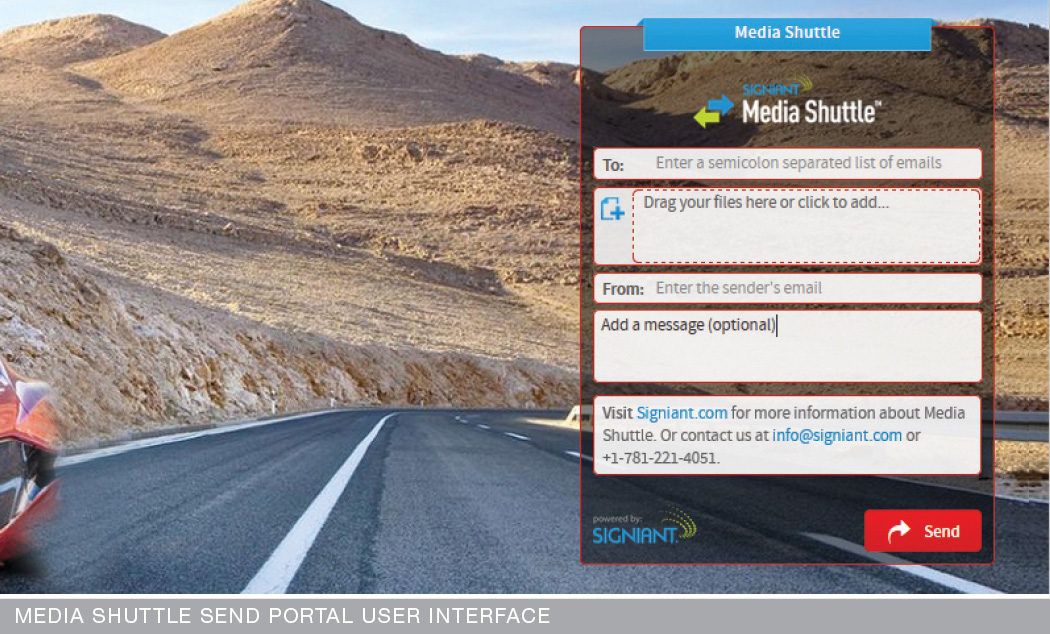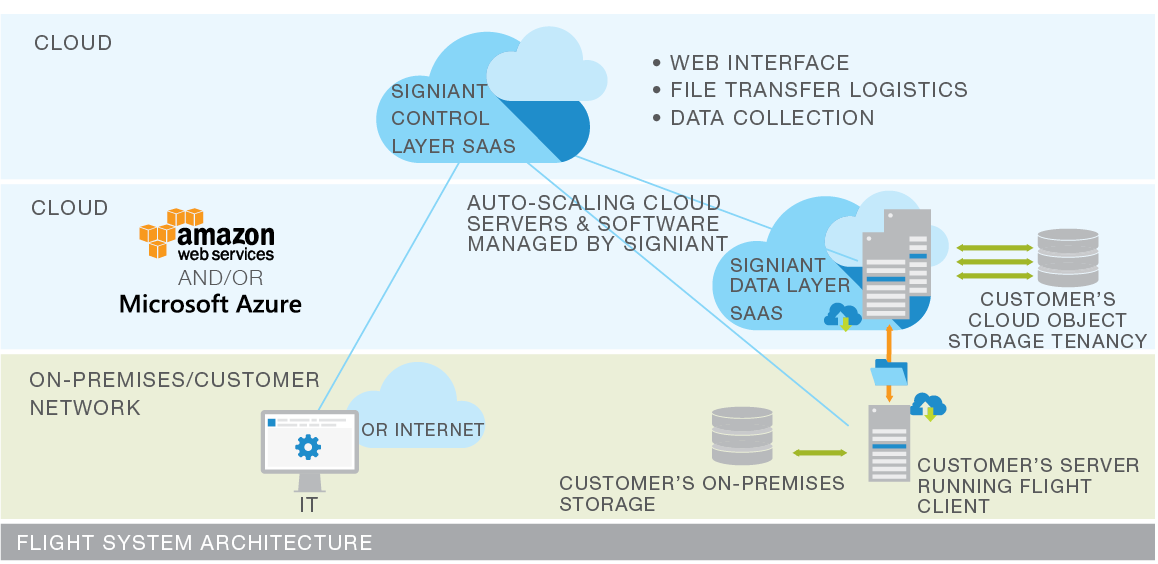Why Cloud-Native Matters: And How it Differs from Cloud-Washed Software
Almost every B2B software company on the market today has its own version of the “cloud mantra”, explaining how the cloud is transforming business, how it’s creating new opportunities for global reach and collaboration, and how their “cloud” software is on the cutting edge of these trends. But marketing is one thing, and reality is another. Not all companies mean the same thing when they use the term “cloud” in their product marketing. Thankfully, many people with a passion for cloud literacy (and truth in advertising!) have been evangelizing the nuances of different classes of cloud software. Some say we shouldn’t even be using the term, because it’s so vague. However, all that evangelizing does seem to be paying off. The average customer today is much more educated on the subject than they were even a few years ago. The cloud is coming into focus, and most businesses are now at least familiar with its different high-level service models, such as SaaS (Software-as-a-Service), IaaS (Infrastructure-as-a-Service), and PaaS (Platform-as-aService). However, at this point in the cloud evolution, it is important to make some even clearer distinctions, particularly as these relate to SaaS, and, more specifically, the difference between “cloud-native” and “cloud-washed” software.

Not all saas is created equal
Key to understanding this difference is the recognition that cloud-native software (also termed “cloud-born” or “cloud-formed” software) is truly integrated with the cloud, built from the beginning to take advantage of all the cloud has to offer, and to pass those benefits on to customers. Cloud-washed software, conversely, is software that was not originally designed or built for the cloud, and therefore only offers some of the cloud benefits.
The term “cloud-washed” came about the same way “green-washed” did, which was used to expose companies that repackaged and marketed existing products as “green” without ever meeting any of the associated environmental standards. Likewise, “cloud-washed” is used to describe a trend in the software development community where companies take advantage of the basic concept of cloud computing — a general reference to any service provided over the Internet — to rebrand their products as cloud solutions.
Many larger companies engaging in cloud-washing do have some cloud integration. However, they haven’t adapted their design principles, built the needed infrastructure or hired dedicated management teams to support true cloud-native software, all of which is a major financial investment. Most of the time, these companies take software that was previously built for on-premises, and simply run it on virtual machines (VMs). Customers then either deploy it in their own cloud tenancies, in a “bring your own license” (BYOL) model, or rent it from the vendor as a fully hosted, pay-as-you-go service.
There are some benefits from this approach for customers, in terms of lowering infrastructure and maintenance costs and shortening deployment cycles. This relocation of premises-based applications to virtualized data centers may even be a crucial first step for some in their transition to a fully realized cloud future. But, without deploying the kind of cloud computing architectures and technologies utilized by the likes of Amazon Web Services, Microsoft Azure, or Google Cloud, cloud-washed software lacks many of the other key features and capabilities provided by fully-developed cloud-native solutions. Such cloud-washed solutions can technically be called SaaS, since this describes a business model and not a technology, but this is not what cloud evangelists mean when they speak of SaaS.
Of course no vendor is going to label their product as “cloud-washed”. Terms to be on the lookout for, rather, are ones such as “cloud-enabled” or “cloud-ready”.
Whatever the label, if a service lacks features like elastic scaling and high global availability, is dedicated for a single customer, or requires downtime for upgrades or maintenance, then this is a clear indication that the solution is cloud-washed, not cloud-native, and that only a subset of cloud advantages are being provided.
To understand why this is, and why it matters, it is necessary to review some core features and benefits of true cloud-native SaaS.
Multi-tenancy, seamless updates and proactive customer focus
Cloud-native SaaS solutions are designed from the outset as multi-tenant auto-scaling solutions, providing multiple levels of redundancy, and delivered as virtualized infrastructure fully maintained and managed by the vendor. Multi-tenancy, in which a single logical instance of an application serves multiple customers, confers numerous benefits. Foremost of these is that it lowers costs for all tenants because core infrastructure (servers, power, HVAC, security, etc.), but also software development and maintenance, are provided by the vendor, and the costs shared by everyone. It also enables customers to focus on their core business needs, rather than IT boondoggles.
Cloud-washed solutions also provide an outsourced virtualized infrastructure, thereby similarly lowering upfront CAPEX costs, but this is provisioned and maintained on a dedicated and linearly scaling basis, for each individual customer. So single-tenancy results in ongoing operating costs that are higher relative to cloud-native SaaS, and there is a corresponding lack of elasticity and flexibility.
Cost is only part of the story. In multi-tenant cloud-native solutions, updates are automated, applied centrally and transparently for all customers, with no downtime needed. This makes it cheaper and quicker for the vendor to regularly build and deliver new features, but it also ensures that all customers automatically always have the latest release of the software. Updates are made simply by spinning up new server instances with the new code, and redirecting traffic to these. The customer may not even be aware there was an update.
In the cloud-washed single-tenant model, software updates require the vendor to install and test the new application release on each customer’s dedicated virtual machines. So there is downtime as virtual machines are shut down and loaded with the new software image.
The ability for benchmarking, collaboration, crowd sourcing, and real-time analytics are all exclusive to multi-tenant cloud-native software. With all customers sharing the same infrastructure, and always connected to the vendor, there is collective scrutiny with multi-tenant SaaS that leads to innovation. Instrumentation of features and functions, combined with real-time monitoring and data analytics, enables vendors to gain insight across all users as to which features and enhancements are adding the most value, and this drives innovation. True SaaS companies build specialist DevOps teams to provide 24/7 monitoring and to automate various aspects of ongoing service management. One result of this DevOps approach is that the vendor often sees and fixes problems before the customer is even aware there was one.
Elasticity and the cloud’s economies-of-scale
Arguably the most distinctive property of true cloud-native solutions, and one that enables multi-tenancy architectures as a viable business model, is their ability to scale seamlessly with changing needs. This elasticity is a product of the cloud’s unique orchestration and automation features that enables cloud-native applications to scale resources up or down as needed across distributed, and effectively unlimited, virtualized, compute platforms.
Combining artificial intelligence with simple job processing and queuing services, servers running on virtual machines are automatically spun up, or shut down and deleted, as dictated by analysis of the jobs in the queue.
The most obvious advantages of this elastic scaling are reduced cost and greater flexibility.
Cloud-native SaaS follows the “pay for what you use” subscription model in which customers only pay for the infrastructure resources they need. In a cloud-washed solution there is no such elastic scaling because the solution is not utilizing the full cloud capabilities. Cloud-washed solutions can scale, but not dynamically and not efficiently. Rather than the intelligent parallelism of a well-designed cloud-native solution, a cloud-washed solution scales only through linear manual addition (or removal) of static resources dedicated for, and charged to, a single customer.
Business flexibility is the other primary benefit from elastic scalability. Not only is it cheaper to pay for just the resources actually needed, but dynamic scaling also allows for much more flexible business planning and operations. Both long- and short-term changes in demand are unpredictable in most modern businesses. Cloud-washed solutions, much like on-premises ones, are harder to rapidly scale for changes in demand, so there is a tendency to over specify for the long-term, and under prepare for the short-term. This lack of flexibility does not just add to cost, by paying for underutilized resources, but can also result in solutions that simply cannot adapt in time to sudden unforeseen spikes in business demand. So flexibility and responsiveness to business needs is another clear cloud-native SaaS benefit.
The true cloud benefits come from the combination of multi-tenancy and elastic scalability — and this is only possible with a true cloud-native SaaS solution.
In IDC’s seventh digital universe most recent study, EMC’s Jeremy Burton shared an insight on a recent trend — companies from all industries are shapeshifting into software-defined enterprises. As more companies shift, so does the burden on IT departments. They will need to discover new ways to adapt their technologies around existing infrastructure.
Cloud-native SaaS frees IT departments from having to provision enough fixed infrastructure to handle peak loads. Instead, the elasticity of the cloud ensures that infrastructure scales with the need, and that the costs incurred scale with the usage. The more tenants a SaaS has, and the higher the utilization of the solution, the greater the economies of scale for the vendor. This enables vendors to lower the costs for everyone, and provide a more powerful the solution as all that usage data is fed back into the vendor’s future development efforts.
By leveraging massively scalable cloud-native solutions, overstretched IT departments challenged with ever greater demands and ever scarcer resources to meet these, are able to get out of the IT infrastructure “build and maintain” business. Instead they can focus their energies on better supporting their businesses through the delivery of quick, innovative, cost-effective, and targeted solutions that provide real, differentiated value and a competitive edge.
Resiliency, high availability and global performance
Multi-tenancy and dynamic scalability are two key features of cloud-native SaaS whose benefits are not shared by cloud-washed alternatives. Additional key benefits from implementing true cloud architectures include the unparalleled resiliency and high availability provided by any well designed cloud-native SaaS.
Resiliency and high availability, like scalability, are tightly linked to the massive redundancy, by design, of cloud infrastructures. Public cloud platforms consist of vast quantities of commodity hardware abstracted as virtualized pools of distributed resources, and managed by layers of specialized software that provide services such as orchestration, load-balancing, failover and automation. Software failover capabilities — the automatic switching to a redundant or standby server in case of failure — create continuous access even if something fails somewhere in the system, or data is lost or corrupted. Load-balancing reduces bottlenecks and the chances of failure under load, and ensures consistency in overall performance, by distributing load evenly across the pool of resources available to the services utilizing it.
The resiliency and high availability of cloud-native solutions comes from load-balancing and failover across distributed compute resources deployed within a dynamic and scalable software-defined networking (SDN) framework. Resources are both dynamically scaled, by spinning server instances up or down, and automatically load-balanced as these are added or removed as demand changes. The fact that the underlying cloud infrastructure spans server instances distributed in data centers around the world not only adds to the overall resilience of the system, but also supports globalization of the service through improved local network access, reliability and performance. A well-designed cloud-native SaaS solution should offer the same experience and consistent performance to its customers around the world.
A cloud-washed solution cannot offer this level of either resiliency or global performance. It is essentially just instances of software running on virtual machines within a localized data center in the cloud, with none of the elasticity, advanced automation or geo-dispersion of a cloud-native solution. Any load-balancing and failover that exists will always be constrained by the limits of linear, static, on-premises software design. Far more reliant on expensive over-provisioning to support peak capacity and provide resiliency, costly and time-consuming manual intervention is the primary fallback for managing performance or availability issues on a cloud-washed solution.
The combination of multi-tenancy, elastic scaling, and automatic load-balancing enable cloud-native SaaS vendors to efficiently meet today’s requirements for affordability, convenience, flexibility, high global availability, and resilience. Cloud-native SaaS solutions build on these features to dynamically adjust to customer demand and optimize performance, no matter where the user is, and without the necessity of downtime or manual intervention. This in turn reduces costs and increases responsiveness in a way that is simply not possible with a cloud-washed solution.
According to IDC’s Worldwide Semiannual Public Cloud Services Spending Guide, public cloud spending in 2017 will surpass $120bn, of which more than half will be on SaaS. Gartner in their Worldwide Public Cloud Services Forecast similarly predicted SaaS sales at close to $50bn in 2017. With this explosion of SaaS adoption, understanding the key differences between cloud-native and cloud-washed software is going to be increasingly critical to ever more businesses.
Signiant’s cloud-native solutions: Media Shuttle and Flight
Signiant offers two cloud-native SaaS solutions, Media Shuttle and Flight, both of which enable businesses to move large unstructured data fast, securely and reliably. The two products, while sharing the same patented core technology, support different use cases.
Media Shuttle, the world’s first SaaS solution for “hands on” accelerated transfer of large files, is designed for person-to-person transfers. With Media Shuttle, users are able to quickly and easily transfer any size file anywhere in the world via a simple web interface. Combining the simplicity of online file sharing with enterprise-class acceleration, security, and control, Media Shuttle allows enterprises to consolidate and track all their file movements in one elegant, easy to use service. Used by the world’s top content creators and distributors, as well as smaller production and post-production houses, Media Shuttle fits any size business’s workflow and budget needs.

Following the tenets of software-defined networking (SDN), in which control plane functionality is decoupled from data plane functionality, Signiant implemented Media Shuttle as an innovative “hybrid SaaS” solution. Media Shuttle’s control plane functionality, which manages file transfers and delivers the web interfaces, is always provided via Signiant’s fully-managed cloud infrastructure. The software that actually performs the file transfers (the data plane) can be deployed using Signiant software installed on customer-managed on-premises servers – or delivered via Signiant’s secure, auto-scaling, redundant and load-balanced servers in the cloud. The customer can choose either or both of these control plane options, depending on where they prefer to store their data – using on-premises storage or object storage in their cloud tenancies (including Amazon S3 and Microsoft Azure). This unique SaaS model offers customers true flexibility and “storage independence”, enabling high security, reliability and control combined with all the benefits of cloud-native software.

Flight is Signiant’s cloud-native SaaS utility for accelerated transfers into and out of cloud object storage. Flight is designed to address one of the biggest challenges for businesses wishing to take advantage of the cloud: the difficulty of rapidly moving high volumes of large data sets into and out of cloud storage. When long distances are involved and speed of delivery to the cloud is critical for hitting deadlines and managing costs, Flight is essential. Automatically maintained and updated by Signiant for the customer, Flight is easy to deploy, scales as needed, and works with leading cloud platforms such as Amazon S3 and Microsoft Azure.
As with Media Shuttle, Flight’s multi-tenant cloud-native design decouples the control and data planes from each other, but, unlike Media Shuttle, with Flight both of these are always deployed and delivered from the cloud. Storage flexibility is still maintained, however, in that this decoupling in Flight enables customers to use the same Flight license to move their data to or from multiple cloud tenancies, including those from different cloud vendor platforms.

Perfect for regularly moving large unstructured data between on-premises systems and the cloud, Flight is a tool made for IT departments. It is particularly impactful for distributed ingest use cases where data arrives from many global locations – some of which are likely to be remote locations without low-latency access to cloud data centers. As with Media Shuttle, Flight is set up with a completely resilient, cloud-native architecture, making sure customers will always get service, no matter where they are.


